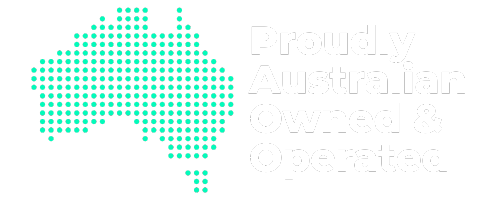In today’s fast-paced and ever-changing business landscape, the way organisations utilise office space is undergoing a profound transformation. The factors driving these changes in the size and type of space required by Australian businesses are diverse, but they all revolve around one central theme: adaptability.
Flexibility as the New Imperative
The desire for flexibility has emerged as a dominant force influencing how businesses interact with their physical workspaces. Workers are no longer content with merely having a desk and a monitor; they seek a work environment that goes beyond the functional and fosters collaboration, creativity, and well-being. This shift is particularly evident in the post-pandemic world, where remote work has become more prevalent and companies are reevaluating their real estate needs.
Over the last 3 years here in Australia, 20% of the office market has come up for renewal and many have downsized as employees are really coming together to collaborate a few days a week. Over the next 3 years the balance of 80% is up for renewal and that’s where we’re going to see the change in the most radical way.
The ever-growing importance of flexibility for both employees and employers can be attributed to several key drivers:
Commute Elimination: Many employees seek to minimise their daily commute, which has become a prime consideration in their job decisions. The prospect of working from home, with all its comforts, raises the bar for the workplace’s attractiveness.
Cost Optimisation: Organisations are looking to reduce overhead costs by optimising their real estate footprint. In a time when economic challenges persist, cost-effective solutions become paramount.
Employee Value Proposition (EVP): Attracting and retaining talent in a competitive job market is a top priority for businesses. Offering an appealing workplace, one that supports well-being and sustainability, is a key component of the employee value proposition.
Productivity and Psychological Safety: Modern workspaces should be conducive to new ways of working that boost productivity and foster psychological safety, encouraging open communication and collaboration.
Reflecting Worker Values: The design of the workspace should reflect the values and priorities of the workforce. Well-being, sustainability, and flexibility are no longer mere buzzwords; they are integral to an organisation’s identity.
Adaptability: The ability to curate and adapt spaces based on changing needs is vital. Businesses need spaces that can be reconfigured swiftly to accommodate evolving work styles and challenges.
Adapting to Tenant Demands
As a landlord / asset owners, in light of the rise of hybrid working and the growing emphasis on flexibility, landlords in Australia are facing new demands from their tenants. As a result, the country’s office vacancy rates have reached their highest levels since the mid-1990s.
While rental costs remain substantial, landlords are sweetening the deal by offering generous incentives to attract and retain tenants. However, the days of “build it, and they will come” are long gone. Landlords must evolve to become customer-centric, focusing on more than just the physical utility of office space.
The Future of Flex Office
The concept of flexible office spaces goes beyond traditional hot-desking. It has become a vital component of a company’s property portfolio, and landlords must adapt to incorporate it into their assets strategically.
Embedding Flex into Your Assets
Some landlords have tried to do it themselves and are learning the hard way that the flex operation is highly complex and mutli-facited. Partnering with an elite operator is unquestionably the right way to play. This partnership allows landlords to focus on their core business while leveraging operators expertise and track record to attract and retain tenants.
Benefits for Landlords
Embracing flexible office spaces can yield several benefits for landlords:
Attract Traditional Tenants: Offering flexible office space can attract tenants who seek this feature in their office setup.
Enhanced Sales and Marketing: The presence of flexible office options can improve sales and marketing efforts to fill vacant spaces.
Transition to Traditional Leases: CreativeCubes.Co can help flex office members transition to traditional leases, ensuring a smooth and seamless process.
Diverse Income Streams: Landlords can generate income from multiple businesses, reducing risk associated with reliance on a single tenant.
Higher Security Bonds: Security bonds for flex spaces can be higher than those for traditional leases, providing additional financial security.
Reduced Renovation Costs: Frequent space renovations can be avoided, reducing operational costs.
No Traditional Lease Costs: Flex arrangements may eliminate traditional lease costs, such as rent-free periods.
Higher Net Income: Flexible office spaces can yield higher net income per square metre compared to traditional leases.
As the business landscape continues to evolve, flexible office spaces have become a critical element of the modern workplace, in fact over the next 3 years they’re going to be mission critical as tenants are increasingly looking for flexible arrangements that provide not only utility but also a sense of community and belonging.
Landlords must adapt to these changing demands by offering flexible leasing arrangements and focusing on creating a customer-centric value proposition.
My team and I at CreativeCubes.Co are at the forefront of this transformation, partnering with landlords to deliver flexible and adaptable spaces that meet the diverse needs of tenants. Embracing this shift toward flexibility and community-building can be a strategic move that benefits both landlords and tenants, ensuring a vibrant and future-ready commercial real estate market in Australia.




